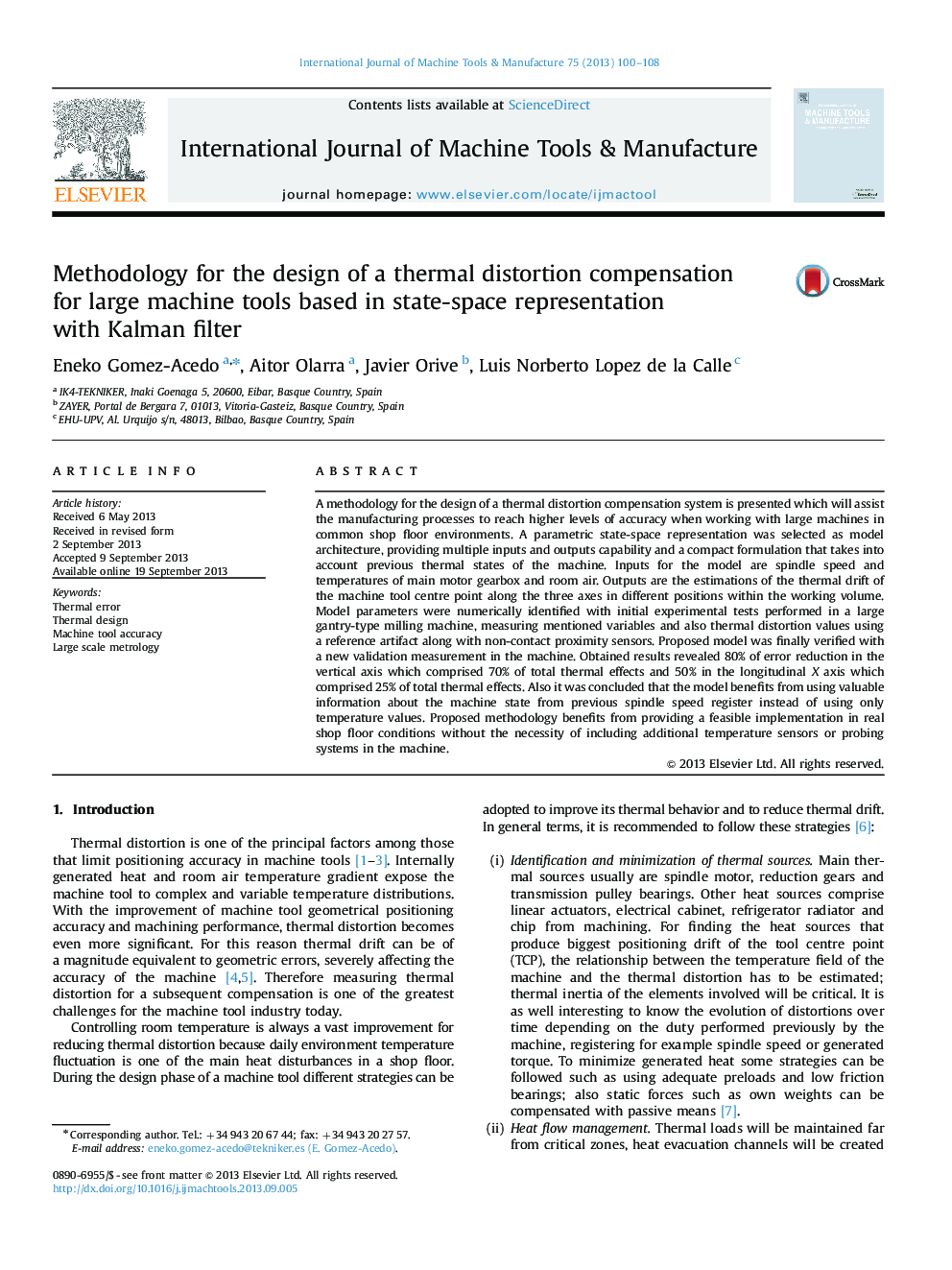| کد مقاله | کد نشریه | سال انتشار | مقاله انگلیسی | نسخه تمام متن |
|---|---|---|---|---|
| 781616 | 1464516 | 2013 | 9 صفحه PDF | دانلود رایگان |

• A new methodology for thermal drift compensation has been developed.
• A mathematical model is used based in state-space representation with Kalman filter.
• Model inputs are room air and gearbox temperatures and machine spindle speed.
• Thermal drift in different TCP points is estimated and compensated online.
• Validation was done in a large milling machine with results of up to 80% error reduction.
A methodology for the design of a thermal distortion compensation system is presented which will assist the manufacturing processes to reach higher levels of accuracy when working with large machines in common shop floor environments. A parametric state-space representation was selected as model architecture, providing multiple inputs and outputs capability and a compact formulation that takes into account previous thermal states of the machine. Inputs for the model are spindle speed and temperatures of main motor gearbox and room air. Outputs are the estimations of the thermal drift of the machine tool centre point along the three axes in different positions within the working volume. Model parameters were numerically identified with initial experimental tests performed in a large gantry-type milling machine, measuring mentioned variables and also thermal distortion values using a reference artifact along with non-contact proximity sensors. Proposed model was finally verified with a new validation measurement in the machine. Obtained results revealed 80% of error reduction in the vertical axis which comprised 70% of total thermal effects and 50% in the longitudinal X axis which comprised 25% of total thermal effects. Also it was concluded that the model benefits from using valuable information about the machine state from previous spindle speed register instead of using only temperature values. Proposed methodology benefits from providing a feasible implementation in real shop floor conditions without the necessity of including additional temperature sensors or probing systems in the machine.
Journal: International Journal of Machine Tools and Manufacture - Volume 75, December 2013, Pages 100–108